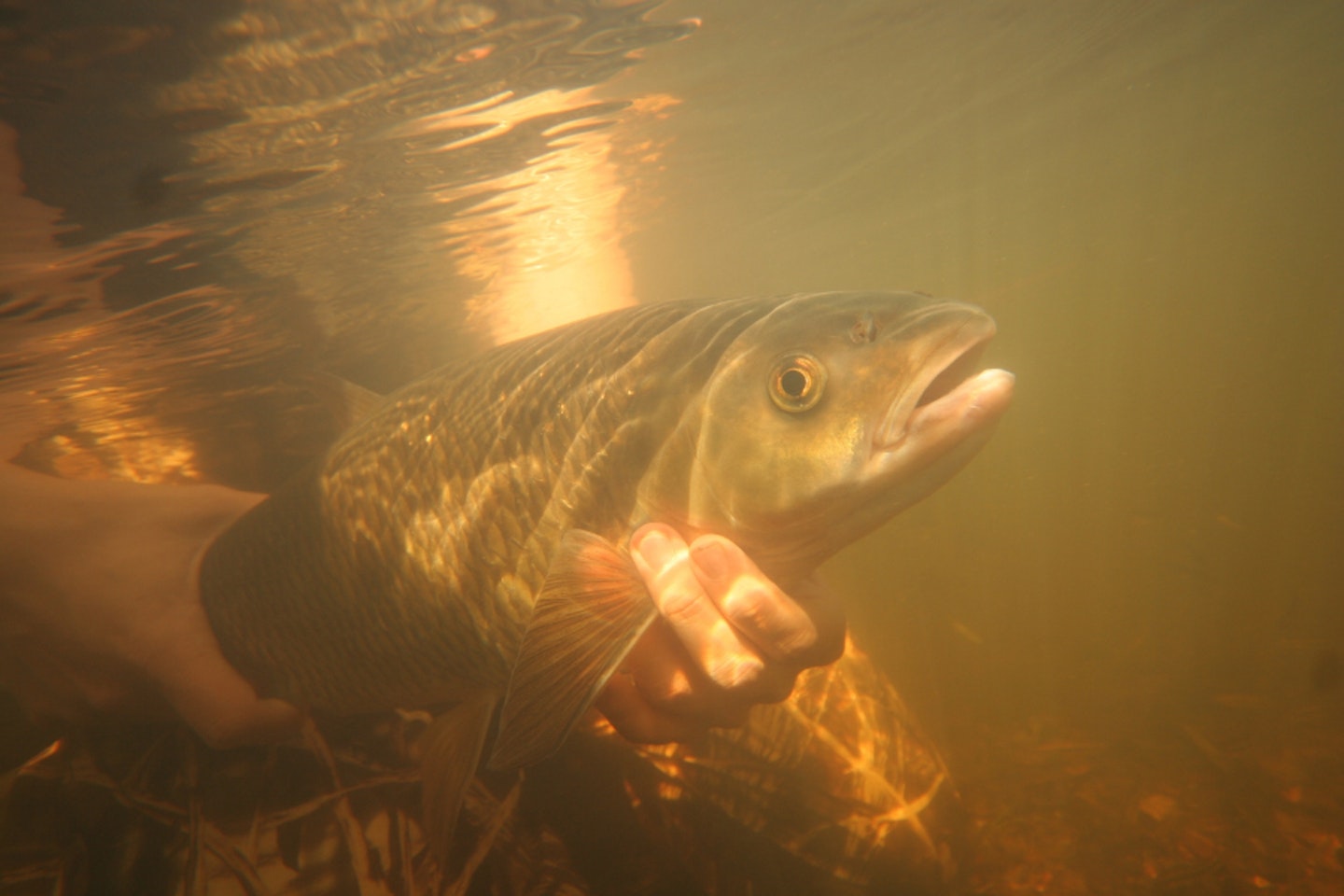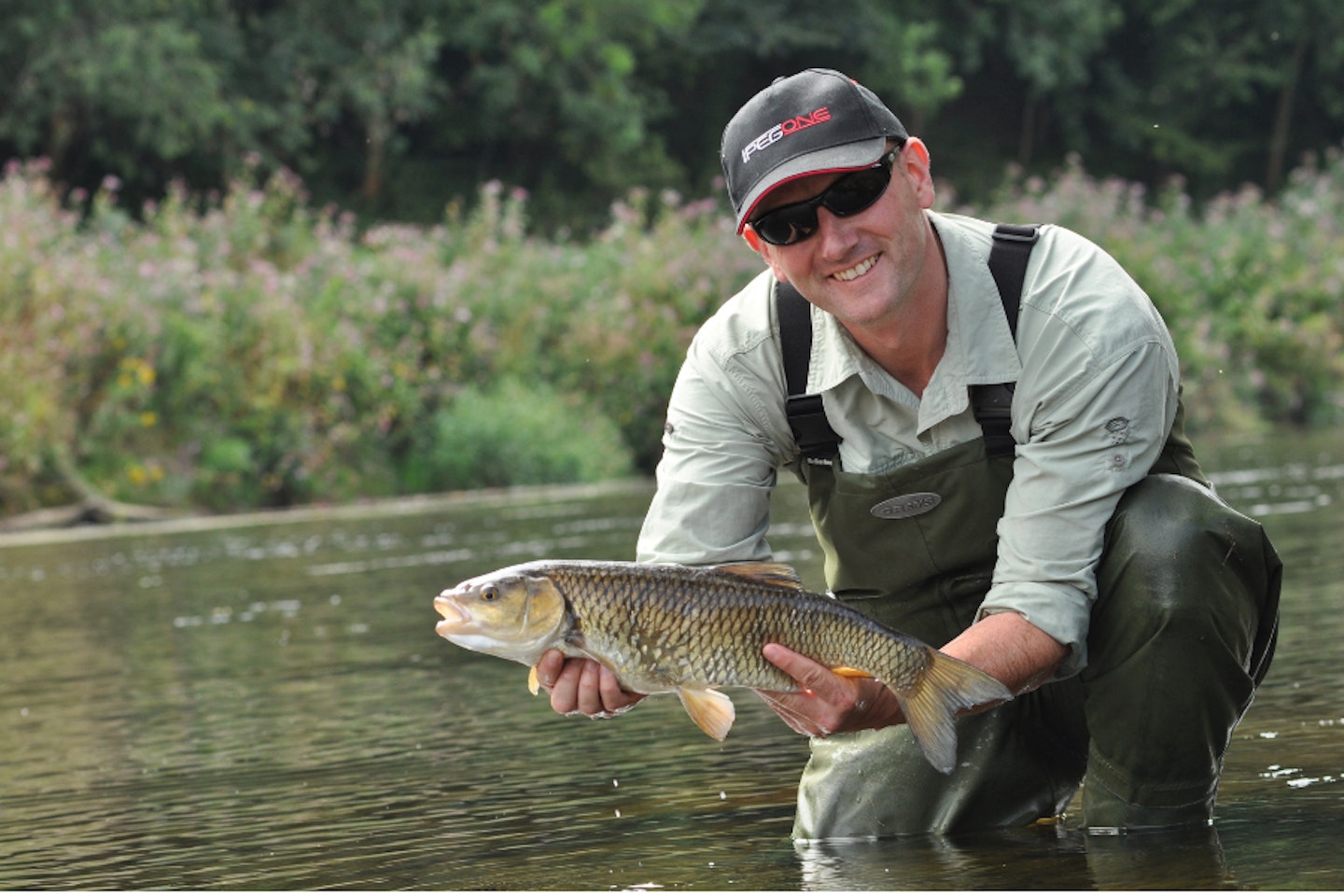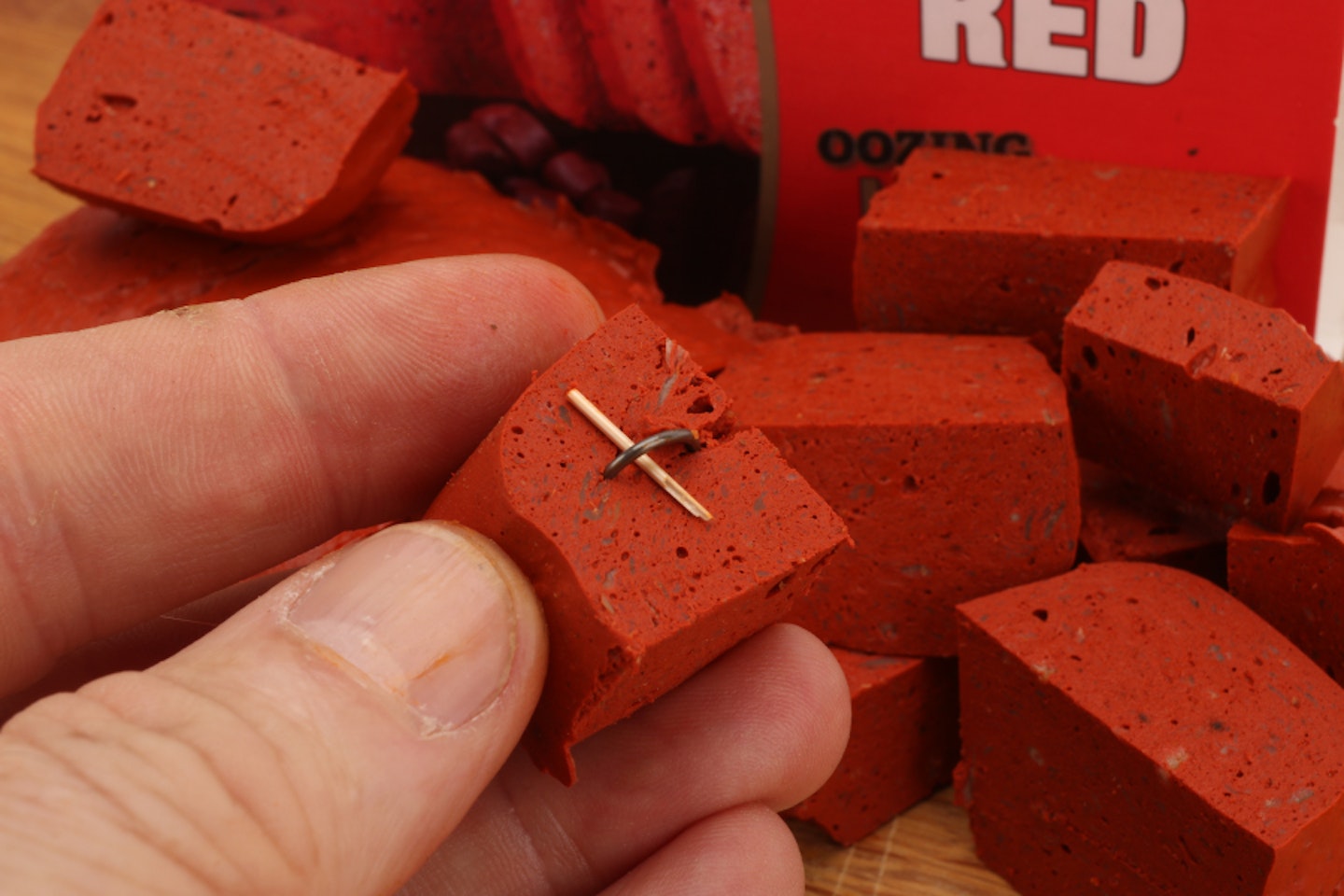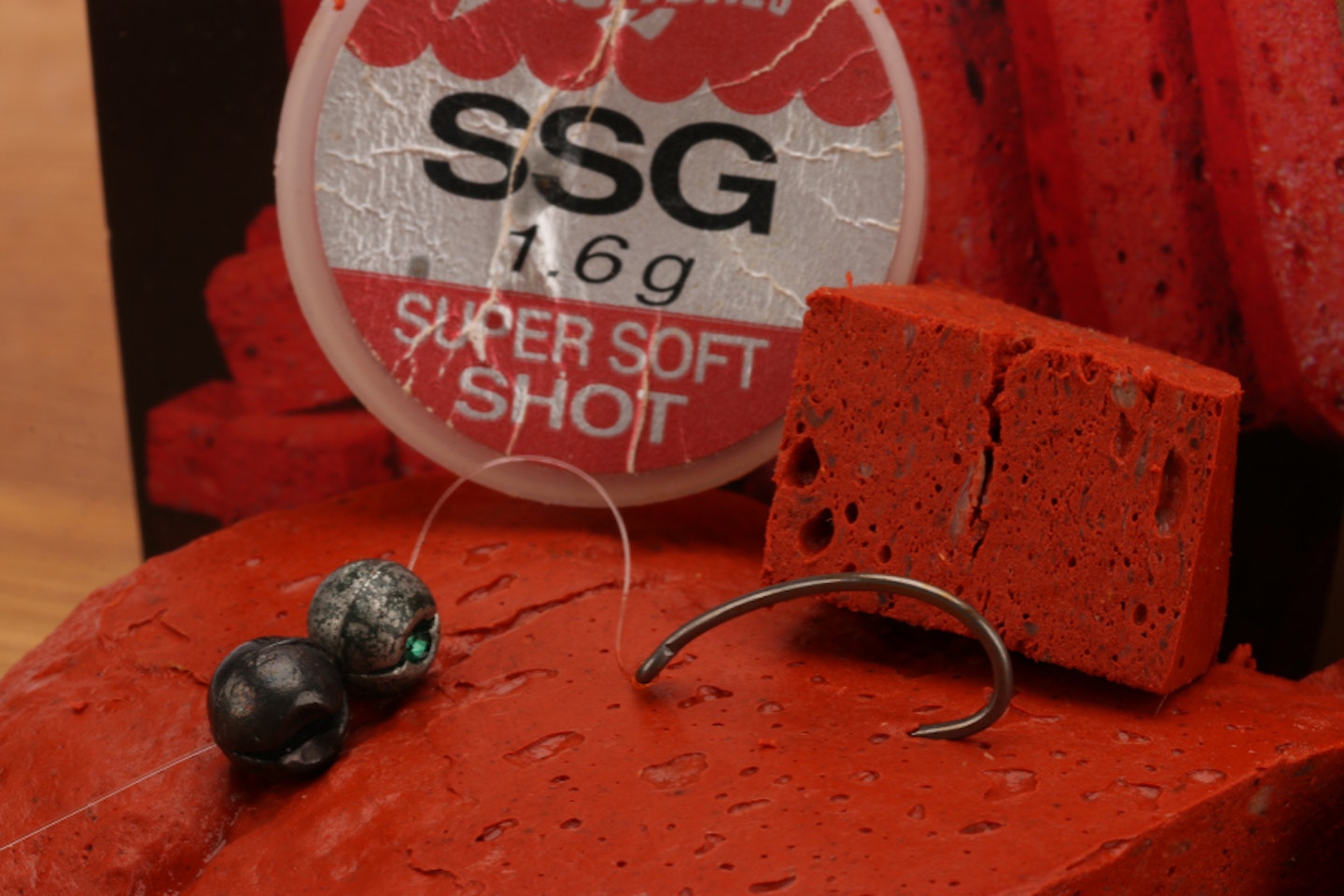Summer rivers can be fickle venues. The fish are still often grouped up and may not be in their traditional haunts.
Location is everything, and if you are new to a stretch then simply spending the session in a swim that looks as if it should hold fish can be a big mistake.
I like to turn this negative into a positive – cut the gear right back to one rod, minimal tackle, and an unhooking mat, and go looking for fish.
On unfamiliar stretches of river this can be the ideal way to explore, as every nook and cranny can be fished. By spending a few minutes here and there, we can build up a picture of the venue, sowing the seeds for more focused sessions in coming weeks.
THE BEST CHUB RODS ARE IDEAL FOR ROVING THE RIVER.

All or nothing
On these sessions I use relatively large baits that the fish can’t miss. I surmise that nine out of 10 fish that spot the bait will probably ignore it – they might even spook – but the tenth one will eat it.
By putting a bait in front of enough fish, the law of averages is bound to play to my advantage.
Why not use smaller baits that would bring more bites, you may ask? Well, my aim is to try and catch some better fish, not get lots of bites. By using maggots or casters the chances are that a small fish will intercept the bait before a better one can get to it.
Don’t get me wrong, smaller baits have a very important part to play on summer rivers, but they lend themselves to a more static approach as the feed builds the swim up over time.
THE BEST SPECIMEN RODS ARE DESIGNED TO TARGET SPECIMEN FISH.

Traditional or modern?
What do I mean by a big bait? If the rivers are low and clear then ‘big’ could mean an inch cube of luncheon meat, or a couple of worms. A little bit of fresh water after rain will have the fish feeding more confidently and a larger bait may pay dividends.
With chub, often it’s the splash of a bait hitting the water that is the initial attraction. A freelined slug will rarely be ignored if it is plopped just behind a group of fish. With a cube of meat, the same approach is likely to result in nearer a 50-50 success rate, proving how effective the natural bait is.
I like to try and have two baits with me on these trips. One could be a natural, such as slugs, worms, or even snails. The other will be a more convenient modern bait, like meat, paste, or big pellets.
Having a choice, without being laden down with too much bait, means I can ring the changes.
Perhaps a bunch of worms is being hounded by minnows, so a switch to paste will work better, or maybe a cube of cheese will be ignored, while a slug is devoured.
WANT TO IMPROVE YOU RIVER FISHING? THEN CHECK OUT THIS EXPERT GUIDE.

All the senses
In deeper water we can add a couple of swan shot just above the hook to get the bait down and trundling along the bottom. Hiding the hook in a cube of meat, or enveloping it in paste, will help avoid the rig catching on snags.
On these sessions it is strictly hookbaits only. Often, it will be a case of just two or three casts in each swim before moving on, leaving no time for baiting up.
Using baits that appeal to all the fish’s senses will help to bring an instant bite. From that initial plop to a strong smell, we want a bait that the fish can’t ignore. Meat and fish flavours are particularly good, and the stronger the smell, the better. A distinct scent trail will encourage fish to move upstream and seek out your tasty offering.
If you can only fit in a couple of hours at the start or end of a busy day, such an opportunist approach is ideal.
With minimal gear, a pocketful of simple baits, and a new river to explore, it’s the perfect antidote to our modern busy lives.
TAKE A LOOK AT THESE 16 GREAT RIVER STRETCHES FOR ROVING.

